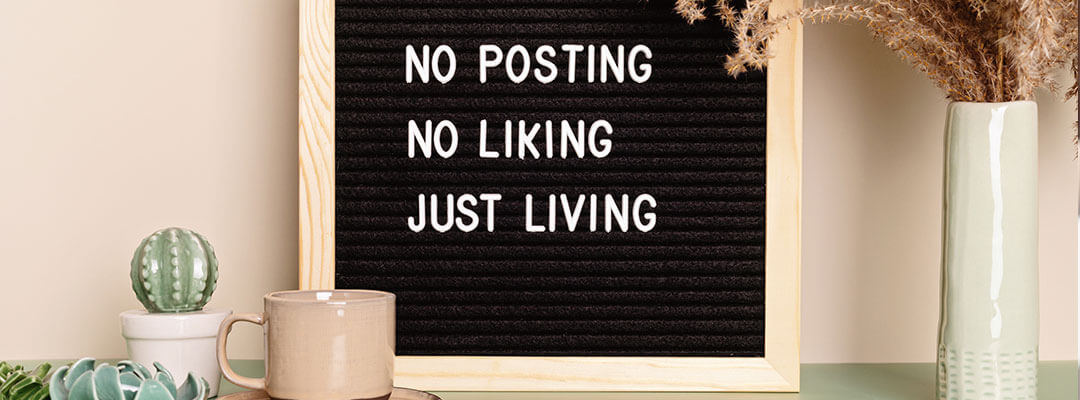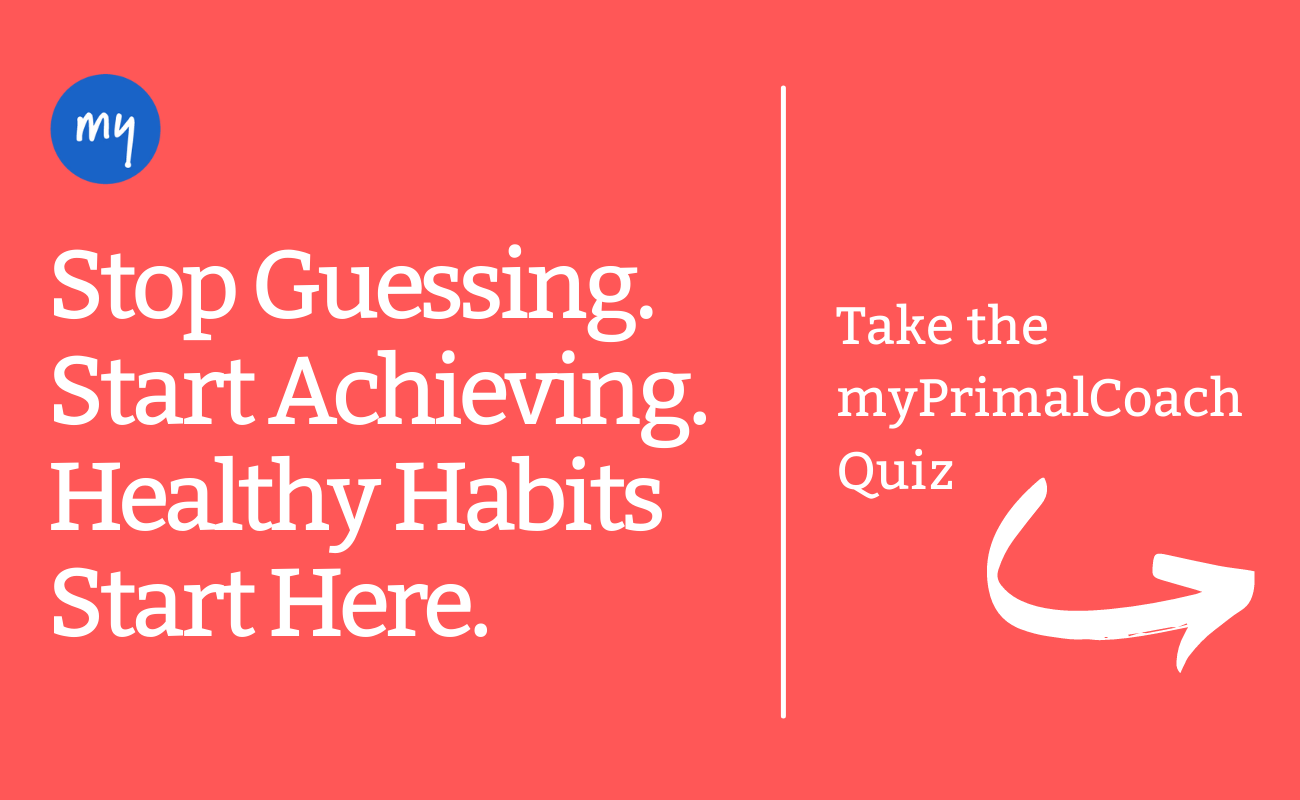If you find yourself thinking in 140 characters or less, it might be time for a social media detox. If your right thumb requires stretching and cracking breaks, it might be time for a social media detox. If you choose your vacation destinations by their level of Instagram-ability, it might be time for a social media detox. If you reach for your phone first thing in the morning, it might be time for a social media detox.

Why You May Need a Social Media Detox
On a more serious note, excessive use of social media has been linked to a range of undesirable side effects. One study found a correlation between Facebook use, low self-esteem and higher levels of narcissism. Social media has also been linked to poor sleep quality as well as hyperactivity, anxiety, and imuplsivity among adolescents. Conversely, another study found limiting social media time reduced feelings of depression and loneliness.
Social media incites social comparison, adding fuel to the old adage that the grass is always greener. By a certain age you learn this adage is garbage, but social media can make one quickly forget that truth. What’s more, not only does using social media lower self-esteem, when one’s self-esteem is lower, they tend to use more social media.
Convinced about taking a break yet? If so, read on to learn how to detox from social media effectively and the best practices to find a healthy balance when you resume your engagement.
Benefits of a Social Media Detox
All that negativity aside, what are the potential benefits of taking a break from the apps aside from a longer battery life, perhaps?
- Alone time. When you put down the phone, you just may relearn how to be alone with your thoughts. We live in a constant state of distraction these days and the art of solitude has been lost on most of us. Have you ever seen the movie, Lincoln? The former President of the United States was notorious for sitting in his study and contemplating just about everything. And look what he accomplished! Who knows what you may be capable of?
- More social interaction. On the contrary to the above, you may find yourself engaging in more in-person social engagements. Social media tends to lend a false sense of sociability when in reality, you are hiding behind a screen and sitting in silence most of the time. You may find yourself getting out and about in the real world seeing people more.
- Pickup a book or new hobby. Is that TBR (to be read) pile on your nightstand collecting dust while growing exponentially? Do you keep putting off those tennis lessons you’ve been wanting to take? Are you opening up Grubhub for dinner while fresh ingredients spoil in your fridge? The amount of time we spend mindlessly scrolling through our social media accounts adds up, and fast. When you free up the time spent scrolling, you may become more aware of all the things you’ve been wanting to do but just haven’t had the time. Spoiler alert: You’ve had the time. You’ve just been on TikTok.
- Return of independent thought. Much like the long-lost art of solitude these days, critical and independent thinking seems to be slipping away as well. We are fed a constant stream of information on a daily basis and a lot of it on social media apps leans more opinion than fact. Have you ever found yourself having an initial thought when you read something only to change your mind after perusing the comment section? Has the art of persuasion taken ahold? Pretty frightening when you think about it … so put down your phone and do just that!
How to Do a Social Media Detox
A study conducted on a group of 143 undergrads at the University Pennsylvania found that limiting social media platform use to just 10 minutes per day significantly reduced anxiety and FOMO (fear of missing out). This suggests there is a benefit in self-monitoring social media usage. Here are the top 9 tips to do just so:
- Figure out which apps you’re using most. Most mobile devices provide stats on your screen time usage. The apps topping your list probably won’t come as a surprise, but there may be some randoms popping you want to take note of. Once you’ve identified the culprits, move on to step 2 …
- Delete them. It may be painful and you’ll probably have some lingering doubts, I’m not that bad. Does it really matter that much? How much harm can it really be doing? What if I just delete one app for now? Do not listen to yourself. This is pure denial. Classic addict behavior — social media addiction is real! Delete them all and your associated accounts. You’re quitting cold turkey.
- Enlist moral support. Having an accountability buddy may help you stick to your social media detox. Research shows that implementing healthy habits with a friend leads to more successful outcomes when it comes to weight loss. Safe to assume a social media cleanse may follow suit.
- Make it known. Along the same premise as an accountability buddy, declaring your break from the app on the actual app may entice you to stay committed.
- Pick up that book or hobby. Keep those hands busy! You will have free time and sitting in silence staring down your phone will only set you up for a relapse. Immersing yourself with a gripping novel or trying a new hobby (such as knitting or crocheting) will help to keep your mind and your fingers away from the apps.
- Break the habit. Ever heard of the rubber band trick? Or aversive conditioning as psychologists call it. It’s been around for many years so the idea must be onto something. You wear a rubber band around your wrist and every time you want to pick up your phone to check social media, you give it a light snap. The slight sting will stop your thought in its track and snap you back to the present moment.
- Out of sight, out of mind. Unless you need to be on call, try placing your phone in the other room or at least outside of arm’s reach. Having to get up may put a damper on your Facebook FOMO.
- Lock screen reminder. An in-your-face message may do wonders. Type out a reminder in your notepad or make a fun graphic in Canva and set it as your lock screen. Every time you pick up your phone you’ll be reminded of why you’re taking a break.
- Track your progress. That smartphone tracking you used to figure out which apps you’re using most is also an excellent tool to keep you motivated. Once you follow the above steps for a while, check in to see how you’re doing and compare it to your pre-detox self. Seeing your progress stats may give you a boost of encouragement to keep sticking it out.
How to Maintain Balance Moving Forward
According to the National Institutes of Health, pleasurable habits, such as social media usage, are difficult to break because they release dopamine. Generally, the longer you stick with something, the easier it gets — so set a minimum time frame (30 days is always substantial for a social media cleanse). If you fall off the wagon, get back on and remind yourself why you chose a social detox in the first place.
Once the withdrawals subside and you’re no longer reaching for your phone every minute, you can try introducing some social media back in a controlled manner. Here are some best practices that will help you succeed with the reintroductions:
- Set time limits. Perhaps you want to start with 5 minutes every evening for 7 days. Set your social media allowance timeframe and adhere to it. Continue your new hobbies and books by your new favorite author to fill the rest of your free time.
- Curate your feed. Cut out the noise! Unfollow the accounts that trigger social comparison or ebb at your self-esteem. Are all of those influencers you follow really doing you any good? Stick to the accounts that add value to your life and friends and people you care about and want to stay up-to-date with. Informative health accounts like myprimalcoach, impartial news sources, accounts in your field of work, colleagues on LinkedIn and your favorite designers and recipes on Pinterest — anything that keeps you informed, interests you, and puts a smile on your face are the best options to make up your feed.
- Log out. Sign-in during your self-allotted time and log out when it’s over. Don’t use autofill for your password! That extra step may help remove some of the mindlessness from the experience and keep you from opening up the apps on autopilot, which will ultimately result in spending less time on social media everyday.
- Silence notifications. Period.
Summary
Should you try a social media detox? Probably. Given the potential side effects of too much use and the purported mental health benefits of cutting back, it’s a bit of a no-brainer. Will it be easy? Doubt it! But as with building any new healthy habit, like exercise or healthier eating, it’s definitely worth it.

